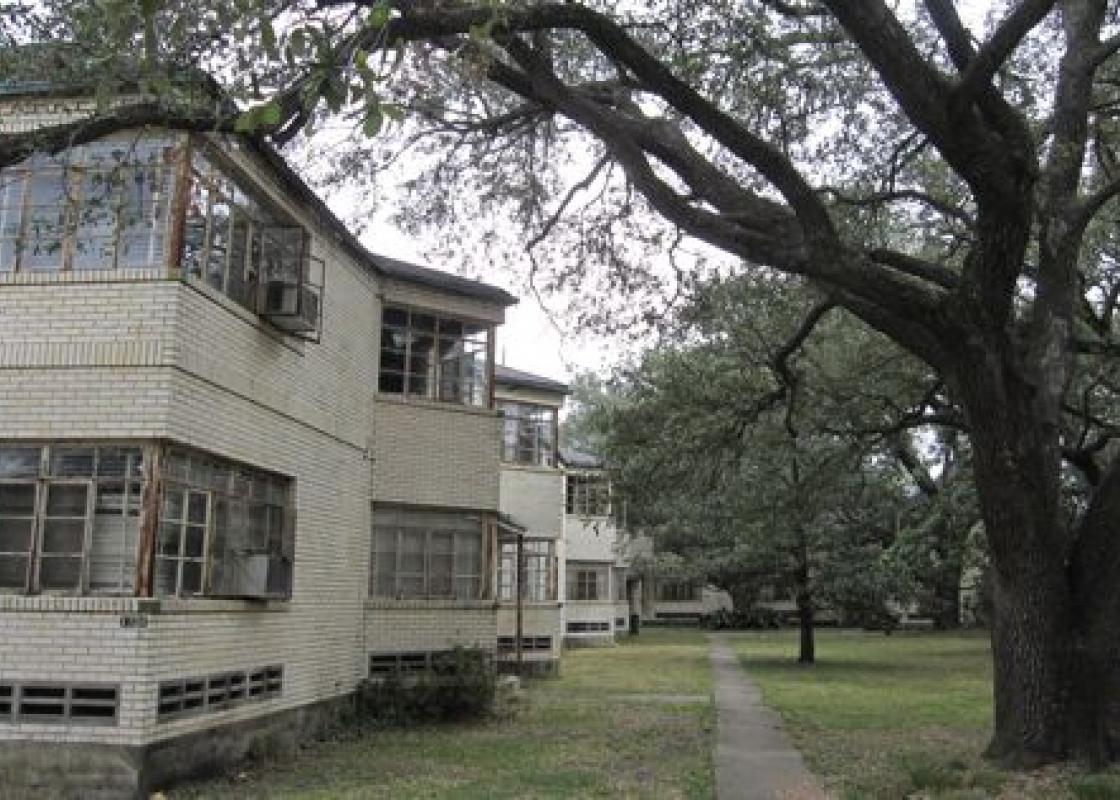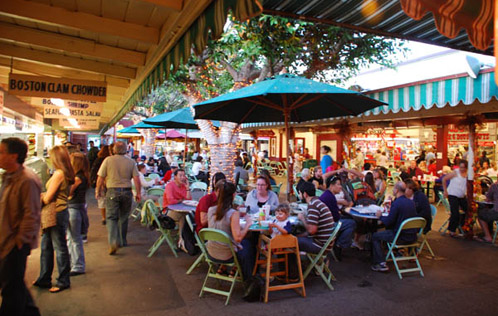
Los Angeles Farmers Market at 3rd and Fairfax [Photos David Bucek]
For the past two years, the Ashby Highrise has dominated debates over Houston's lack of zoning and land-use planning. The well-to-do residents of Southhamptom and Boulevard Oaks sought to delay and ultimately stop the 23-story building proposed by Buckhead Investments.
There is a new group of sign wielding residents, in Montrose. The Chronicle has reported over the past month on the sale of a 7.68-acre site, until recently the home of Wilshire Village, to the H-E-B grocery store chain. The blog Swamplot covered a Saturday March 13 protest led by the Montrose Land Use Coalition. The graphics stood in contrast to the comic terror of the "Tower of Traffic" signs at the Ashby Highrise protests. At least one sign showed a rainbow. One poster detailed a plan for a farmer's market.
That plan came from a group that includes David Bucek, Daniel Hall, and Chisun Rees of Stern & Bucek Architects. They worked with several Montrose residents and Dana Harper, with whom Stern & Bucek has teamed up on the rehabilitation of the Frame/Harper House and the Schulenberg Dance Hall.
Bucek shared a copy of the plan with OffCite --- Montrose Farmer's Market Plan. Below is a jpg version.
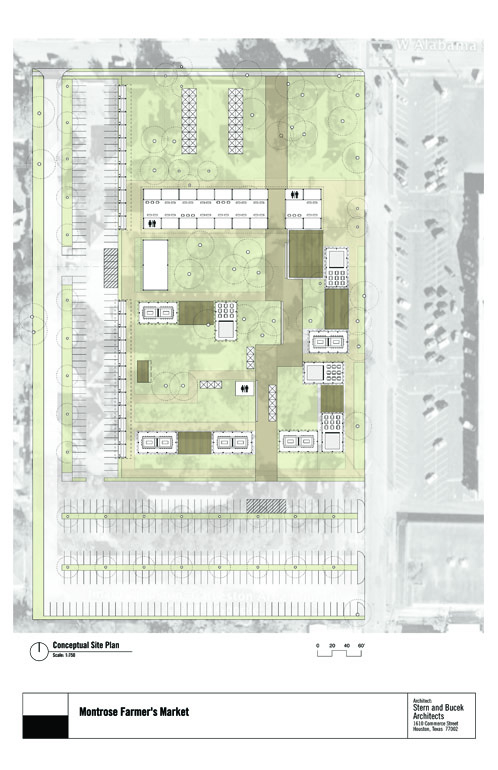
In an email, Bucek provided some of the background and motivations for the plan:
We have been meeting at Brazil coffee house, owned by Dan Ferguson, with the goal of creating a Montrose Farmers Market that goes beyond the typical parking lot variety. Our conceptual plan promotes open space and was influenced by other well-known farmers markets such as the Los Angeles Farmers Market at 3rd & Fairfax and the Ferry Building Farmers Market in San Francisco. In addition to selling locally grown produce, these markets offer retail shops, coffee houses, restaurants, and much needed civic space. I have included some pictures I took this fall for reference, which you are free to use.
Our goal for the 4th largest city is to have an urban market that rivals those of the West coast. Montrose would be an ideal site for such a market given the diversity and existing urban street scape/new rail line. We chose the Wilshire Village site because it is the largest undeveloped tract of land in the immediate area and was for sale until recently. Our group is not part of the Montrose Land Defense Coalition, we just met. However, we allowed them to use our conceptual plan. Our plan was to create a series of park like gathering spaces with one main building with shops and a series of covered pavilions with restaurants and cafes. Local produce would be sold up front under tents, within the main building and under two long covered areas where trucks can back up. A long board walk extends from north to south. If realized, such a project should be designed with sustainability in mind. For our scheme, we proposed to locate the new structures within the areas of the former apartments to maintain the existing trees.
We developed the plan for the Wilshire Village site to spark community interest and development funding. I am not sure how HEB will develop this tract? However, some type of urban farmers market is greatly needed to compliment the existing decentralized markets and can be realize on a different/smaller site.
David C. Bucek, AIA
LEED AP BD+C
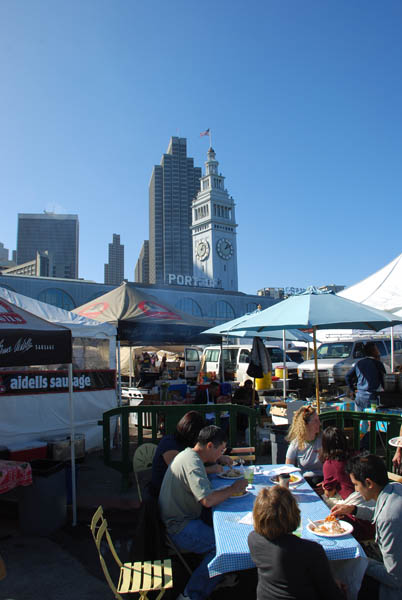
San Francisco Ferry Building Farmers' Market
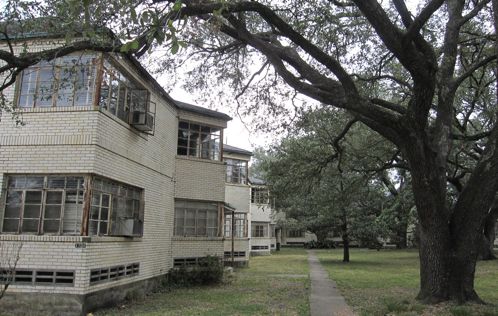
Wilshire Village was the last of the three original FHA-insured garden apartment complexes built in Houston, according to Steven Fox.
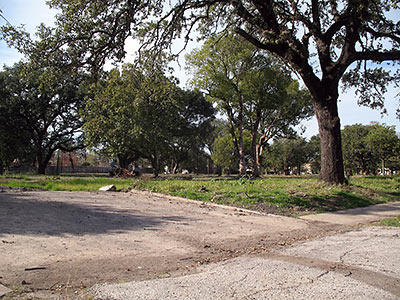
Current state of Wilshire Village Site, photo from Swamplot.
The group Bucek worked with and the Montrose Land Defense Coaltion are not the only ones who have offered community-oriented visions for the site. Forever Garden has an active Facebook group. Their mission is "to acquire the property and create an amazing urban/edible garden community center for yoga, meditation, nutrition classes, cooking, gardening classes, gardening/nature therapy, poetry readings, music, plays, rotating 3-month residencies for art, music, writing, and horticulture, and activities and programs to institute multi-generational community efforts."
Has the sale to HEB shut down all of those dreams? For one, the sale does not appear to be final. According to the last Chronicle report, "H-E-B spokeswoman Cyndy Garza Roberts said March 23 the company has a contract on the property and is in the 'very early stages' of negotiations."
Kirk Farris, an artist who leads the non-profit Art and Environmental Architecture Inc., was among the group that worked with David Bucek on the farmer's market plan. He said in a telephone interview, "I think H-E-B is extremely sensitive. There's an entire class of people who run this city who want to see this site saved. It's not just the coffee house crowd. Because of this public pressure to save that site, H-E-B may coordinate with the neighborhood. We may well end up with public space and a farmer's market." Alternatively, he suggested the building energy and coalescing of residents around calls for public space might lead to the enactment of their visions at another site. "There's the possibility of coordinating with the Menil and the old Southwestern Bell corner."


